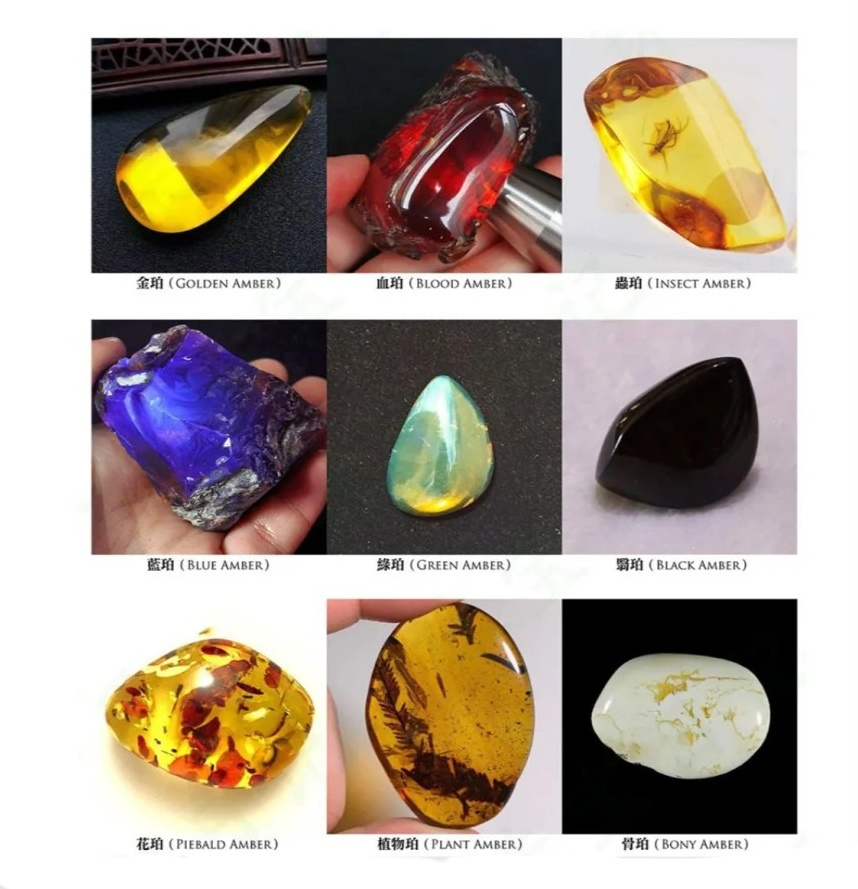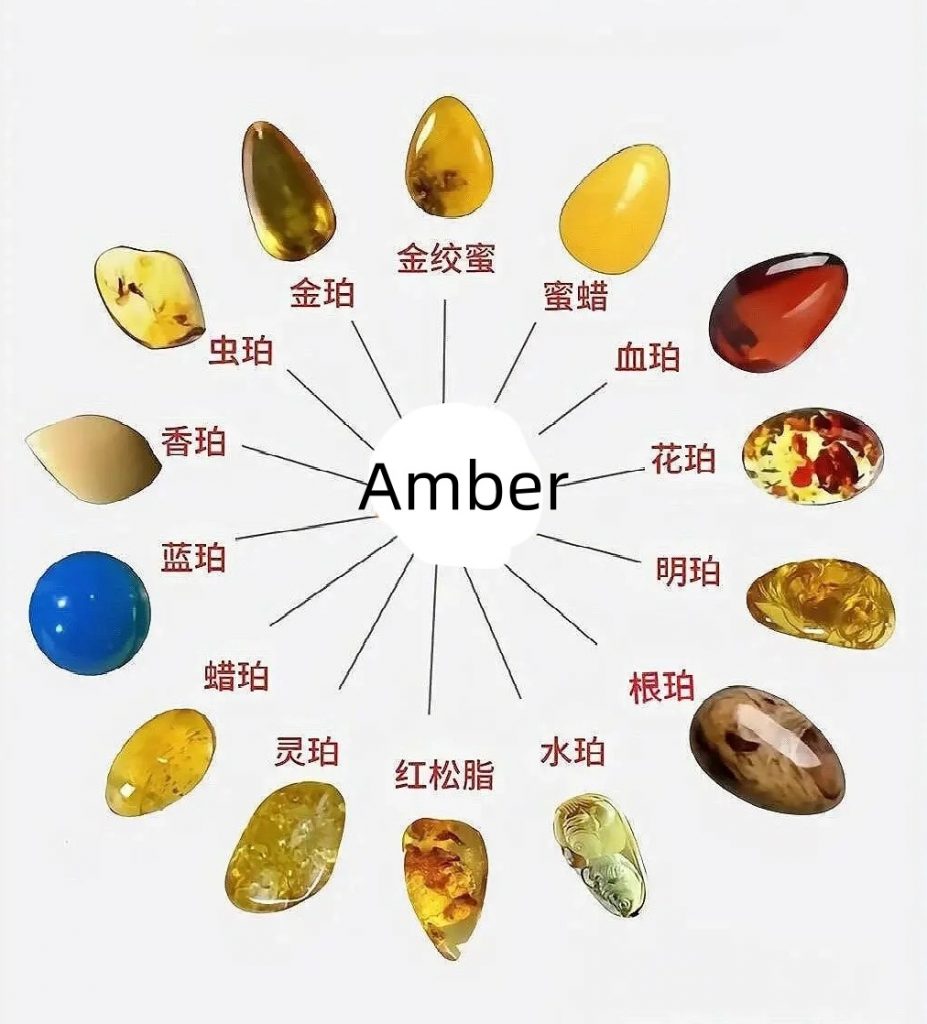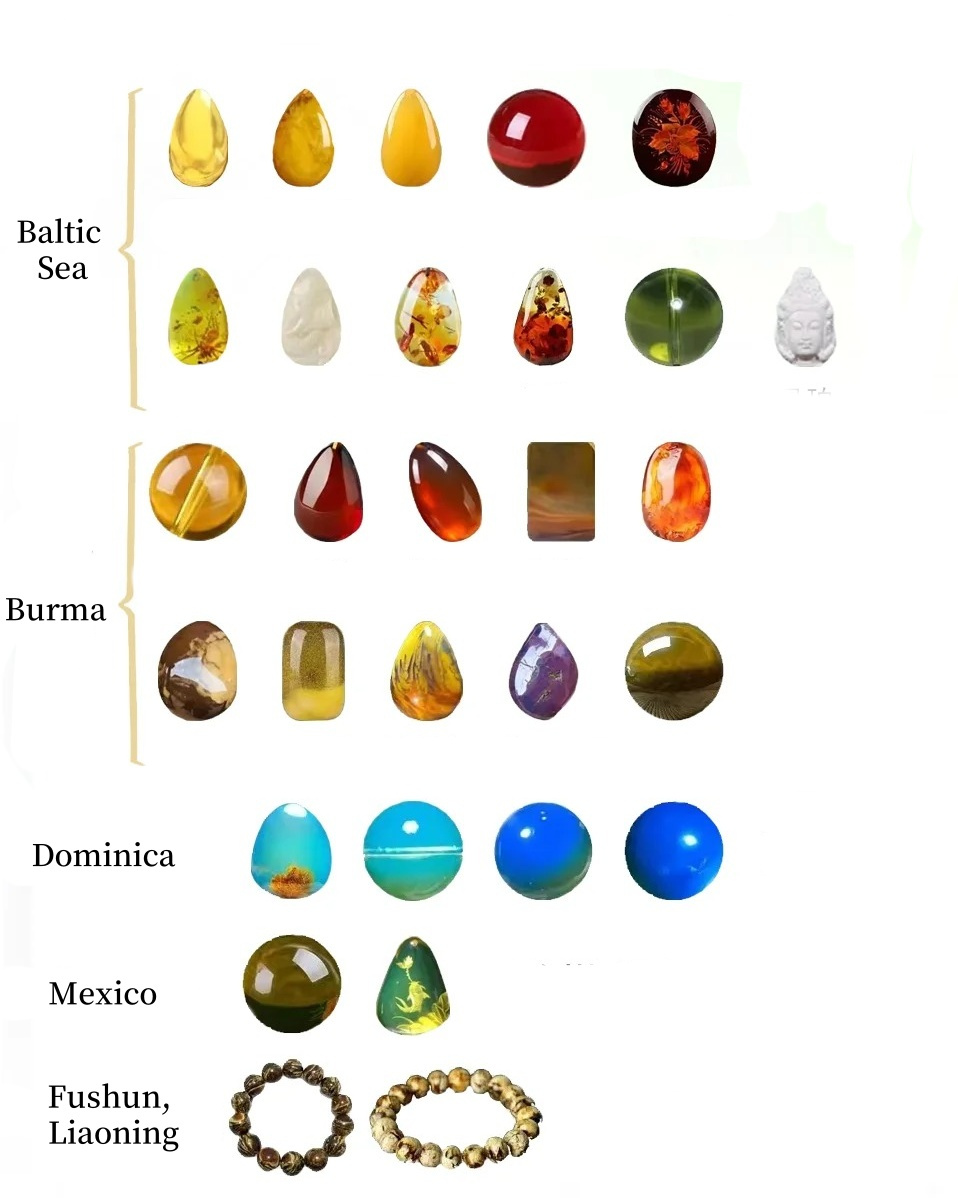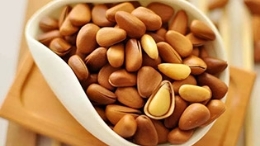🟠Amber is an organic gemstone, a fossilized resin from plants in the Pinaceae, Ponderosa, and Picea families, caused by resin dripping from ancient trees and buried in the ground for tens of millions of years, hardening and petrifying under pressure and heat. Some of them are covered with small insects such as bees, which makes them very beautiful and unusual. Most amber is formed by the petrification of the resin of plants in the Pinaceae family, and is therefore also known as “fossilized turpentine”.
🟠As a natural fossilized resin, amber has rich medicinal value and cultural significance. Modern research shows that amber contains succinic acid and other components, which may have anticonvulsant, antioxidant, antibacterial effects, and it is also believed that wearing amber jewelry can absorb negative energy, enhance immunity, beauty and so on.
🔸Chemical formula: C10H16O
🔸Refractive index: 1.539~1.545
🔸Specific gravity: 1.08
🔸Hardness: 2.0~2.5
🔸Luster: Mainly a resin luster, rarely a silky luster
🔸Transparency: The transparency of amber is related to the succinic acid content, not to its age
🔸Crystal system: Amorphous
🔸Fracture: Shell-shaped, very fine grains can be observed at the fracture.


✅Colors and types
🟠Amber is a precious gift from nature to mankind. At present, there is no clear classification and definition of amber in the jewelry industry, but there are some customary names for amber in commerce according to its color, causes, appearance, characteristics and substances contained within it.
🔶Common amber types are: gold amber, blood amber, insect amber, blue amber, green amber, cataract amber, scented amber, bone amber and so on.
🔶Common colors are red, yellow, orange, green, brown, blue, multicolored, etc.
The range of amber colors is generally most prevalent in yellow, orange, and brown.
✨Amber with a reddish tint is of higher value, while rare amber can even be blue or green in appearance and is extremely valuable.


✅Formation
🟠Ten million years ago the resin tract of trees secreted an organic colloid – natural resin, fell outside the tree or fill in the trunk of the tree holes and bark fissures, and then after a long period of geological action, the loss of volatile components and by polymerization, curing, and gradually congealed into the natural fossil, and then by erosion, transport and sedimentation (weathering) deposited in the marine delta or other continental impact layer.
✅Clarity
🟠Amber can be either transparent or translucent in appearance, and while naturally clear amber is very popular, unlike many other gemstones, amber’s ‘beautiful imperfections’ add to its value. Amber is usually more expensive when there are clearly visible trapped insects, animals or plants inside.
✅Origin
🟠Amber is mainly produced in Russia, the Baltic coast, Poland, Myanmar, the Dominican Republic, Mexico and other countries and regions; China also produces amber, of which Fushun, Liaoning Province, is famous for producing high-quality amber. However, most of the amber on the market today comes from Burma, Russia and other regions.
- Burma: Common gold amber, blood amber, brown-red amber, gold-red amber, red tea amber, stone amber, full star, cave honey, violet, green tea amber and other varieties
- Dominican Republic: The most valuable blue amber is produced in this country, most of them have different shades of blue.
- Mexico: Amber from Mexico often has a greenish tint and is often sold as Dominican blue amber on the market
- Fushun, Liaoning,China: Common insect and plant amber, rich in inclusions, the color of the brownish tone, now basically extinct

✅Amber and Beeswax
🟡Amber and beeswax, as natural gemstones, are both fossilized resins. Many people believe that beeswax and amber are two different substances, but in fact, beeswax is a variety of amber, and there are many types of amber, and beeswax is a type of amber.
⁉Amber and beeswax, what exactly is the difference between them?
- First of all, from the point of view of transparency, amber is transparent, you can clearly see the internal texture and color. Beeswax is opaque.
- Secondly, in terms of composition, amber is mainly composed of resin, while beeswax contains more succinic acid. This difference in composition makes them different in texture and color.
- Finally, in terms of price, beeswax is generally 1-2 times more expensive than amber.
🟡However, the exact price is affected by the quality, origin, color and other factors. Overall, amber and beeswax each have their own unique characteristics, and the choice of which gemstone to choose depends on personal preference and budget.


✅Optimization
🟠Amber treatment: pressing, color film, dyeing.
🟠Amber optimization: heat treatment, colorless coating, press-fixing.
- Amber heat treatment: Amber is heated in a press, in an oven or in vegetable oils in order to increase its transparency, to create special inclusions, to improve or change the color, and to enhance the ornamental qualities of the amber.
✅Precautions
🚫Avoid scratches and bumps
👉Amber has a low hardness and should be worn without friction with gemstones minerals and other hard substances to prevent scratches or abrasions.
🚫Avoid strong light and heat
👉Amber is very sensitive to light and heat, especially for some red and green amber that has been optimized, its color will change or fade under strong heat.
🚫Avoid chemical substances
👉Amber is particularly sensitive to acids and is easily dissolved in sulfuric acid and hot nitric acid. It should be kept away from cosmetics, and amber jewelry can be removed when spraying perfume or applying nail polish.


